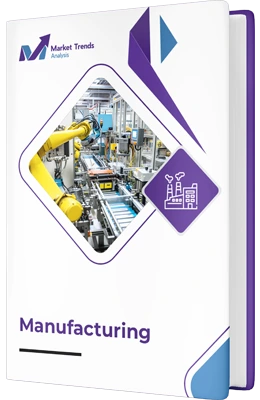
The 3D printing elastomers market size was valued at USD 1.2 billion in 2024 and is projected to reach USD 3.8 billion by 2033, growing at a compound annual growth rate (CAGR) of approximately 15.2% from 2025 to 2033. This rapid expansion is driven by advancements in additive manufacturing technologies, increasing adoption across diverse industries, and the development of high-performance elastomeric materials tailored for 3D printing applications. The market's growth trajectory reflects a strategic shift towards flexible, durable, and industry-specific solutions that meet evolving consumer and industrial demands. As 3D printing elastomers become more accessible and versatile, their integration into mainstream manufacturing processes is expected to accelerate, fostering innovation and competitive differentiation across sectors.
3D printing elastomers are flexible, rubber-like materials designed for additive manufacturing processes, enabling the production of complex, durable, and elastic components. These materials possess unique properties such as high elongation, resilience, and chemical resistance, making them suitable for applications requiring flexibility and impact absorption. Unlike traditional elastomers, 3D printing variants are engineered for layer-by-layer fabrication, facilitating rapid prototyping, customized manufacturing, and on-demand production. Their compatibility with advanced 3D printing technologies like FDM, SLA, and SLS expands the scope of design possibilities, fostering innovation across industries. The evolution of 3D printing elastomers is pivotal in creating smart, adaptive, and industry-specific solutions that address modern manufacturing challenges.
The 3D printing elastomers market is witnessing transformative trends driven by technological innovation and industry-specific demands. Increasing integration of multi-material printing allows for the creation of complex, functional parts with tailored properties. The adoption of environmentally sustainable elastomers aligns with global regulatory shifts toward eco-friendly manufacturing. Moreover, the rise of Industry 4.0 concepts promotes smart, automated production lines that leverage advanced elastomeric materials. The proliferation of customized, on-demand manufacturing is reshaping supply chains, reducing lead times, and enabling rapid product iterations. Lastly, collaborations between material developers and 3D printer manufacturers are fostering the development of high-performance elastomers optimized for specific industrial applications.
The expansion of the 3D printing elastomers market is primarily driven by the increasing demand for flexible, durable, and lightweight components across various industries. The rapid evolution of additive manufacturing technologies has lowered production costs and increased accessibility, encouraging wider adoption. Additionally, the need for rapid prototyping and customized production solutions is compelling industries to shift from traditional manufacturing to 3D printing elastomers. Growing awareness of environmental sustainability and regulatory compliance is also prompting the development of eco-friendly elastomeric materials. Furthermore, the rising focus on smart and functional materials for innovative applications is fueling market growth. Strategic collaborations and investments in R&D are further accelerating technological advancements and market penetration.
Despite promising growth prospects, the 3D printing elastomers market faces several challenges. High material costs and limited availability of specialized elastomers hinder widespread adoption, especially among small and medium-sized enterprises. The current limitations in printing resolution and mechanical properties of elastomers can restrict their use in high-precision applications. Regulatory uncertainties surrounding new materials and manufacturing practices pose compliance risks. Additionally, the lack of standardized testing and certification processes for 3D printed elastomeric parts hampers industry acceptance. Compatibility issues between elastomer formulations and existing 3D printing hardware also constrain market expansion. Lastly, the relatively slow pace of technological maturation in some regions delays full-scale industrial deployment.
The evolving landscape of 3D printing elastomers presents numerous growth opportunities. The development of cost-effective, high-performance bio-based and recyclable elastomers aligns with global sustainability goals, opening new market segments. Expanding applications in healthcare, such as custom prosthetics and flexible implants, offer significant potential. The integration of smart elastomers with embedded sensors and actuators paves the way for innovative, functional products in robotics and wearable tech. Emerging industries like soft robotics and flexible electronics are poised to benefit from advanced elastomeric materials. Moreover, increasing collaborations between material scientists, OEMs, and end-users can accelerate the commercialization of industry-specific solutions. Regulatory support and standardization efforts will further facilitate market penetration and consumer trust.
Looking ahead to 2026 and beyond, the 3D printing elastomers market is set to revolutionize industries through the proliferation of smart, adaptive, and multifunctional components. The future scope encompasses highly customized medical devices, resilient automotive parts, and flexible consumer electronics, all produced on-demand with minimal waste. Advancements in multi-material printing will enable the seamless integration of elastomers with rigid materials, fostering innovative product designs. The rise of Industry 4.0 will facilitate fully automated, predictive manufacturing ecosystems that leverage elastomeric materials for enhanced performance and sustainability. As regulatory frameworks evolve and material science breakthroughs continue, the market will witness accelerated adoption of high-performance, eco-conscious elastomers tailored for specific industrial needs, ultimately transforming the landscape of manufacturing and product development.
The 3D printing elastomers market size was valued at USD 1.2 billion in 2024 and is projected to reach USD 3.8 billion by 2033, growing at a compound annual growth rate (CAGR) of 15.2% from 2025 to 2033.
Rising demand for lightweight, flexible components, advancements in additive manufacturing technologies, rapid prototyping adoption, growing use in automotive and healthcare sectors, and increasing customization needs drive the 3D printing elastomers market growth.
The Top players operating in the 3D Printing Elastomers Market Arkema S.A., 3D Systems Corporation, Henkel AG & Co. KGaA, Stratasys Ltd., Arkema, Evonik Industries AG, Formlabs Inc., Materialise NV, XYZprinting Inc., DSM Engineering Plastics.
3D Printing Elastomers Market is segmented based on Material Type, Printing Technology, End-User Industry And Geography.
The sample report for the 3D Printing Elastomers Market can be obtained on demand from the website. Also, the 24*7 chat support & direct call services are provided to procure the sample report.